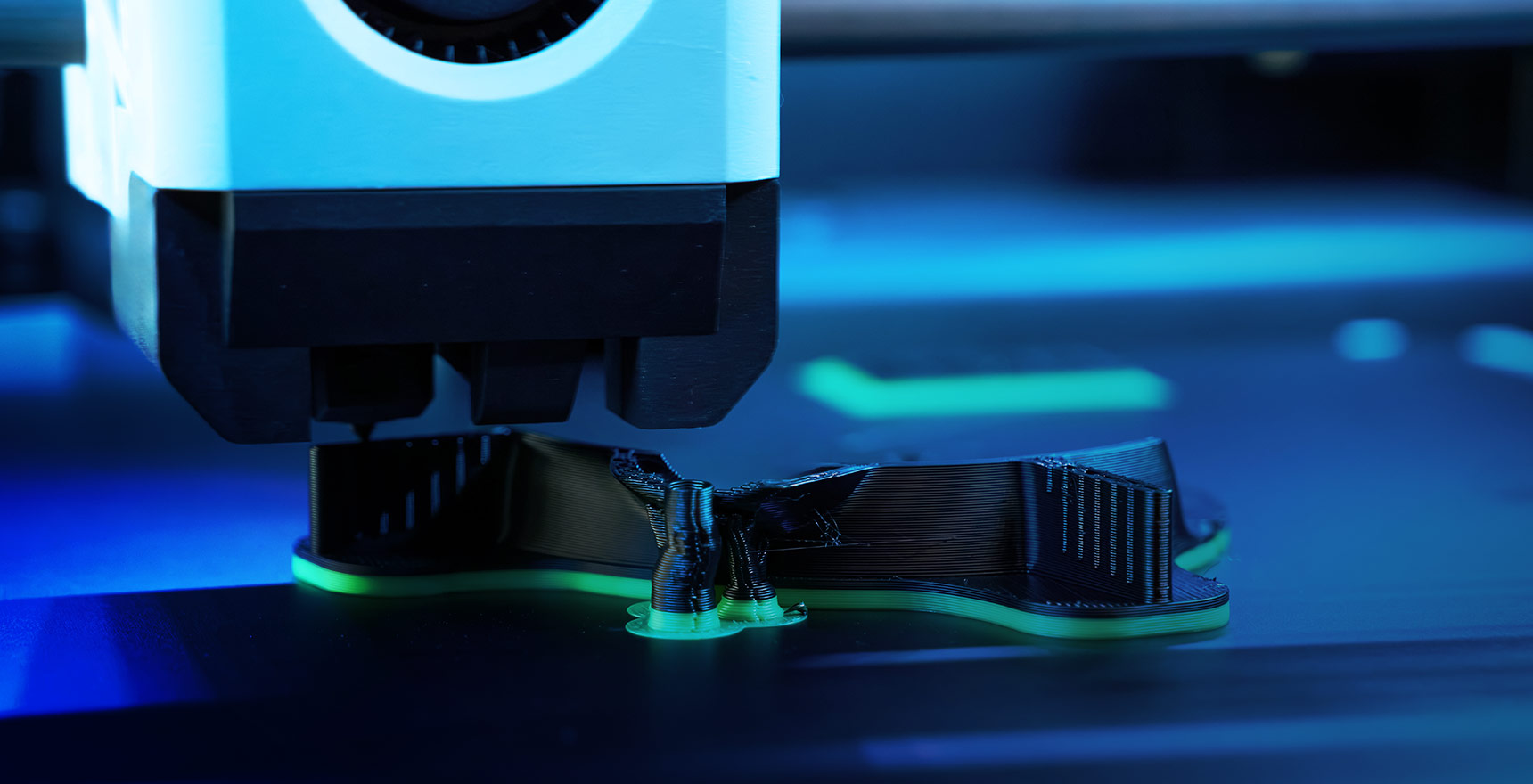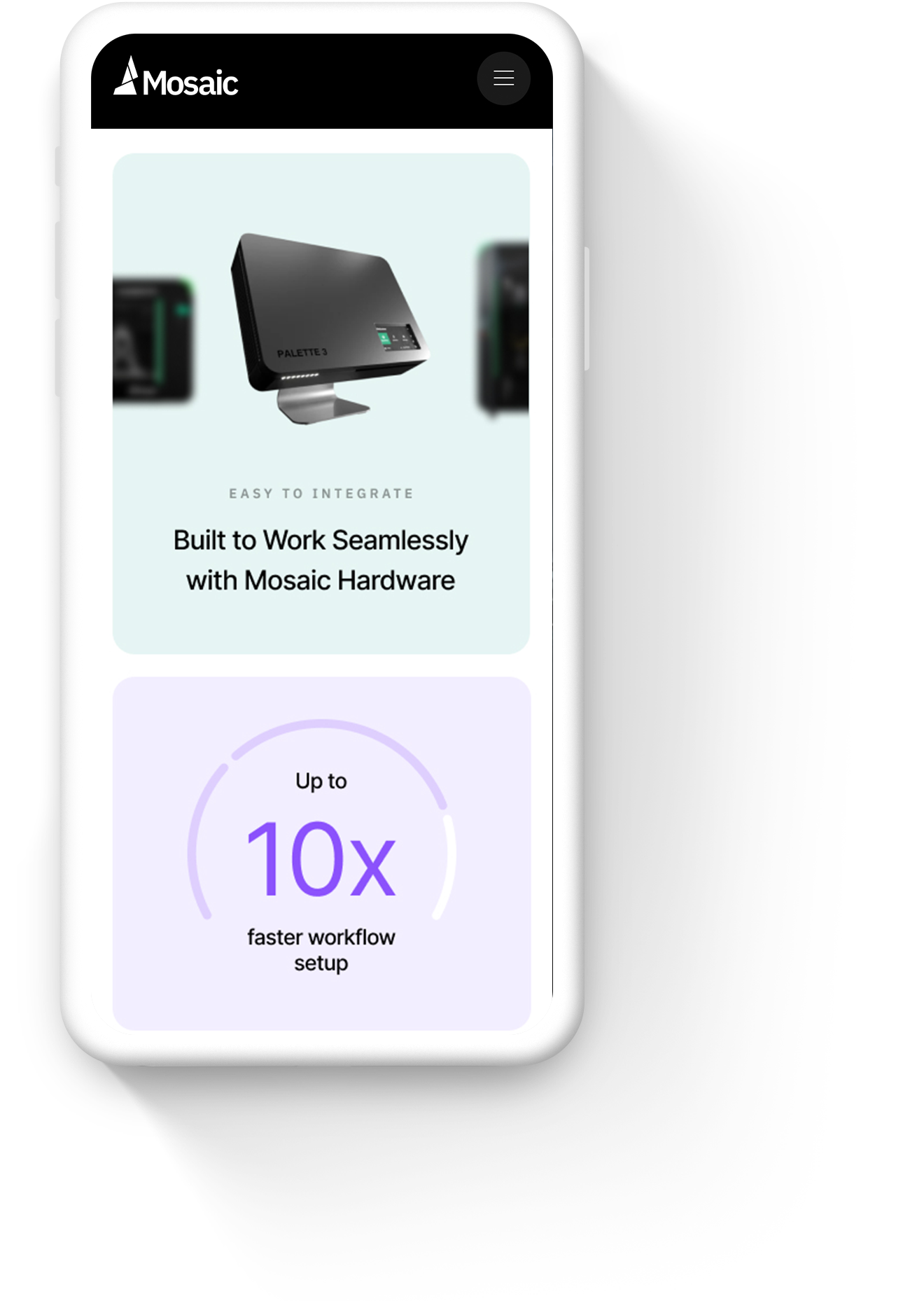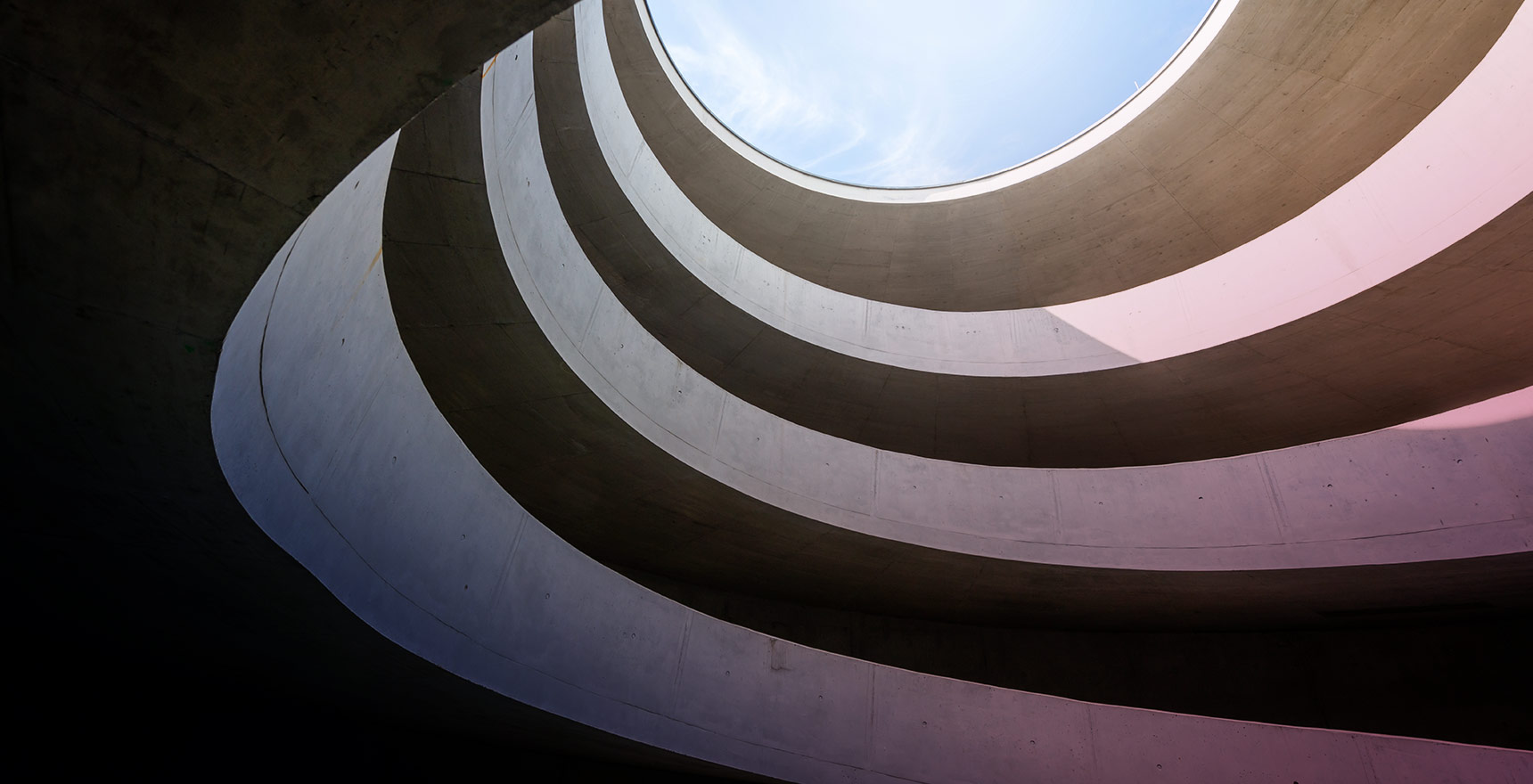Helping a Canadian Industrial 3D Printer Manufacturer Grow Into a More Powerful Digital Presence
Mosaic sought a website that appealed directly to industrial buyers, including aerospace, automotive, and medical manufacturers, rather than just hobbyists or early adopters. This B2B audience demanded clear evidence of reliability, performance, throughput, precision, and efficient workflows—information the old site failed to provide. The previous design offered limited visuals, minimal context, and failed to adequately showcase print detail or the scale of Mosaic’s hardware, forcing content into rigid, flat layouts.
The old platform also hindered the marketing team’s agility. Fixed templates limited their ability to promote new applications, share industry stories, update landing pages, test new messaging, or introduce technical media. This inflexibility restricted SEO efforts and prevented the site from supporting new marketing campaigns.
To address these issues, our team proposed a system capable of presenting their technology with clarity and confidence, matching their precision-focused product line. This necessitated video, motion, and modular layouts to effectively demonstrate print accuracy, material capabilities, and automated workflows. The design needed ample space to feature large machines, industrial environments, and production-ready parts.
Equally critical was a Content Management System (CMS) that supported rapid publishing and growth. The marketing team needed structured fields for product data, flexible components for building new pages, and robust SEO tools. The goal was to enable frequent iterations and future product launches without requiring a site rebuild.
Finally, integrating the Shopify store presented a specific challenge. While users needed a clear path to materials and accessories, the core site’s B2B focus on industrial sales had to be maintained. The store needed to align with the brand, ensuring the transition felt natural and the overall user experience remained unified.

Web Design Goals
- User Experience Design – a refinement of the user experience to simplify navigation and communications would lay the foundation for our conversion strategy.
- User-Interface Design – the entry-level website lacked polish and limited how the marketing team could present new products and applications to drive user engagement. Our team would take the lead in crafting a new user interface design that stayed true to the brand identity and introduced smooth interactions and a more sophisticated experience.
- Custom WordPress Development – to power the beautiful new website and provide the marketing team with complete control over every pixel, a custom WordPress backend would be developed injecting the digital marketing with new life and opportunities.
- Search Engine Optimization – develop a brand new SEO strategy for the new website by weaving our best-in-class, technical SEO strategies into the website design and development process.
Our Design Process
Discovery
Our work began with a detailed discovery phase. We reviewed analytics to understand how users behaved on the old site. We measured entry points, drop-off points, time on page, and engagement with product content. This revealed patterns that held Mosaic back. Many users left before reaching key details. Mobile sessions underperformed. High-value pages loaded slowly. Important technical sections received limited traffic because they sat in low-visibility areas.
We evaluated technology performance to understand how the platform shaped the experience. Static templates restricted how content could be adapted to different audiences. Video and media use was sparse and vague, which limited Mosaic’s ability to illustrate workflows and print accuracy. Internal search did not guide users toward important information. These signals helped define the core problems the new system needed to solve.
Navigation analysis showed gaps in the user journey. Users moved unpredictably between product pages, industry content, and technical information. Many struggled to form a clear picture of hardware capabilities. This showed us where content paths needed structure.
Competitive analysis added another layer of insight. We reviewed how leading companies in industrial printing, manufacturing automation, and additive production presented their technology. We looked at how they used video, specifications, case studies, and application stories to build confidence. We studied their navigation models, product page structures, and onboarding paths. This showed where Mosaic needed stronger visual communication. It also highlighted growth opportunities where competitors failed to provide clarity or depth. The findings helped us position Mosaic with a cleaner hierarchy, stronger visual identity, and a more direct path to product understanding.
The combined research shaped the foundation for the strategy phase. We defined goals for user flow, content structure, and conversion paths. We identified which sections needed video and motion to solve comprehension issues. We outlined CMS requirements for rapid publishing and targeted SEO. Each insight informed a clear plan for design, messaging, and technology.

Our Approach
We built a design system centred on clarity and motion. Every major interaction guides users toward product understanding. We used clean transitions and focused animation to reinforce key messages. We added video throughout the site to show the printers in action. These clips showcase extrusion quality, multi-material workflows, and real production environments. This helps users understand speed, reliability, and output.We embarked on creating a robust design system, fundamentally rooted in the principles of clarity and expressive motion. Our objective was to ensure that every significant user interaction wasn’t just functional, but served as an intuitive guide toward a deeper understanding of the product’s capabilities.
This was achieved through the meticulous application of clean, deliberate transitions and focused animation, which were strategically used to reinforce key messages and draw the user’s attention to critical information. For instance, an animation might highlight the sequence of a multi-material print, clearly illustrating the technology’s workflow advantage.
To further bridge the gap between product concept and real-world application, we integrated high-quality video content throughout the site. These clips were not generic footage; they were specifically designed to showcase the industrial 3D printers in dynamic action. The videos highlight several crucial aspects:
- Extrusion Quality: Close-up shots demonstrate the precision and consistency of the material deposition, a direct indicator of final part quality.
- Multi-Material Workflows: Video illustrates the seamless switching between different filaments, showcasing the machine’s ability to produce complex parts with varied mechanical properties in a single build.
- Real Production Environments: By showing the printers within actual manufacturing and engineering facilities, we provide tangible proof of their ruggedness and suitability for demanding, high-throughput use.
This visual evidence is vital as it directly addresses core user concerns, helping them immediately grasp the machine’s essential performance metrics: its operational speed, guaranteed long-term reliability, and the superior output quality and complexity achievable with the system.







